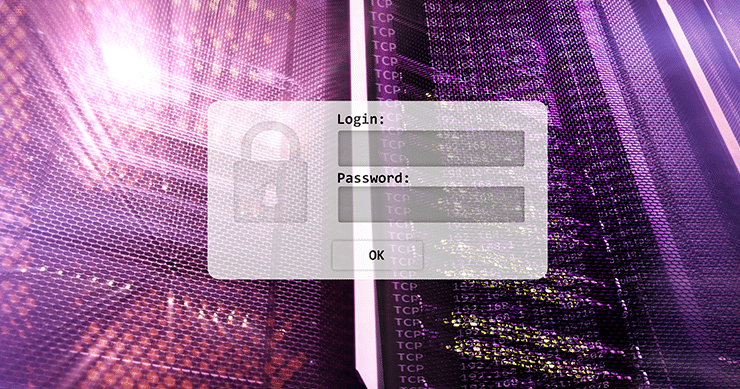What is Identity and Access Management?
Identity and Access Management (IAM) system defines and manages user identities and access permissions. With IAM technologies in place, IT managers can ensure that users are who they claim to be and that users access the applications and resources they are authorized to access. IAM technologies also provide the ability to securely store identity and profile data as well as data governance functions to ensure that only data that is necessary and relevant is shared.

Why is IAM Important?
Identity and access management systems, or IAMs, allow or deny entities the right to access resources using the devices they want to. A cyber security identity and access management system is a compilation of technology and processes that allow IT administrators to assign a single digital identity to each entity, authenticate them when they enter their credentials, allow them access to authorized resources, and continuously monitor and manage their access.
In response to the proliferation of third-party vendor services, organizations must be able to provide secure identity access for vendors and business partners, remote workers, mobile devices, and end users. But it goes even further. Today, identity access management has expanded to a whole new world of Internet of Things (IoT) devices. Cloud computing, hybrid IT environments, and software as a service (SaaS) have given further reach to the IAM landscape.
Because it stands at the crossroads between people, devices, and critical enterprise assets, identity and access management is key to a successful security program. Access management cyber security strategies fortify a system against weak user credentials and poor passwords that are commonly exploited by hackers who look for network entry points to plant ransomware or steal data.
If implemented properly, IAM contributes to ensuring corporate efficiency and the smooth operation of digital systems. No matter where they are, employees may conduct business as usual, and centralized management ensures that they only have access to the resources necessary for their jobs. Secure system accessibility for clients, partners, and suppliers boosts efficiency and reduces costs.
Start Getting Value With
Centraleyes for Free
See for yourself how the Centraleyes platform exceeds anything an old GRC
system does and eliminates the need for manual processes and spreadsheets
to give you immediate value and run a full risk assessment in less than 30 days
What Does an IAM Implementation Include?
- Centralized Identity Management
The cornerstone of identity management and access control solutions is managing access to resources at the identity level. Centralizing the management of user identities can greatly simplify this strategy.
- Context of Access
IAMs connect the dots between users through a device to an application or resource. MFA or adaptive authentication are two methods where contextual clues of the login attempt such as location, time, device, etc. can be used. IAMs attempt to identify access management signals related to user behavior to see if it looks risky and out of character.
- Policy-based Control
Users should only be given the permissions necessary to complete their respective tasks, not more. Access levels will depend on their department, employment description, or any other qualities that are relevant. These policies guarantee that resources are secure regardless of where they are being accessed from as part of the centrally controlled identity solution.
- Zero-Trust Architecture
An organization’s IAM system is continuously monitoring and securing its users’ identities and access points through a zero-trust architecture. In the past, organizations trusted employees once they logged in, but zero-trust practices make sure that every employee is continuously identified and their access is regulated.
- Secured Privileged Accounts
In an access control system, not every account is created equally. Accounts having privileged access to sensitive information or special tools can be given a level of protection and assistance appropriate to their role as an organization’s security manager. Training is usually provided to administrators of the IAM solution.
Key Benefits of Identity and Access Management Systems
- Password Strengthening
Data breaches are often the outcome of poorly controlled password choices. The chance that users may use default or weak passwords can essentially be eliminated by IAM systems, which enforce best practices in credential management. They also make sure all users change their passwords periodically.
- Mitigating Insider Threats
The number of breaches caused by internal actors is rising. By ensuring users only have access to the systems they work with and cannot raise privileges without supervision, IAM can reduce the harm done by malicious insiders.
- Advanced Tracking of Anomalies
IAMs go beyond simple identity management and include advanced technologies like biometrics, behavior analytics, risk-based authentication, and AI, making it easy to adapt to the challenges of the modern security environment.
- Reduced IT Costs
Cloud-based IAM services can lower operating costs by eliminating the need to maintain on-premise infrastructure.
What IAM Means for Compliance Management
IAMs facilitate compliance efforts and provide many of the safety controls required by security and privacy standards. You might not be in compliance with industry standards or governmental rules if identity access management practices are not effectively regulated. Additionally, auditors might not be able to show that data from the organization is adequately protected from unauthorized access.
Start Getting Value With
Centraleyes for Free
See for yourself how the Centraleyes platform exceeds anything an old GRC
system does and eliminates the need for manual processes and spreadsheets
to give you immediate value and run a full risk assessment in less than 30 days





